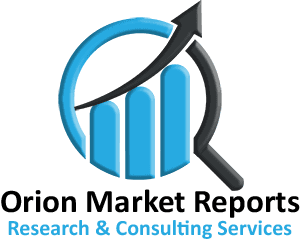Industry 5.0 Market is Dazzling Worldwide and Forecast to 2031
Industry 5.0 Market was valued at USD 102.8 billion in 2023 and is expected to grow at a CAGR of 20% between 2024 and 2031. Industry 5.0 represents the next phase of industrial evolution, focusing on human-technology collaboration, where humans and machines work together in synergy to enhance productivity and innovation. This market analysis delves into the current state and future prospects of Industry 5.0, highlighting key trends, challenges, and opportunities.
Market Overview:
The Industry 5.0 market is witnessing significant growth propelled by the increasing adoption of advanced technologies such as artificial intelligence (AI), robotics, Internet of Things (IoT), and augmented reality (AR). This convergence of technologies is reshaping traditional industrial processes, driving efficiency, and transforming business models across various sectors.
Key Trends:
Human-Centric Approach: Industry 5.0 emphasizes the centrality of human skills and creativity, fostering a collaborative environment where humans and machines complement each other’s strengths. This trend is driving the development of intuitive human-machine interfaces and collaborative robots (cobots), facilitating safer and more efficient workflows.
Customization and Personalization: With Industry 5.0, manufacturers are increasingly focusing on customization and personalization to meet diverse consumer demands. Advanced technologies enable flexible production lines capable of efficiently producing customized products in small batches, thus enhancing customer satisfaction and market competitiveness.
Data-Driven Decision Making: Data analytics and AI play a pivotal role in Industry 5.0, enabling predictive maintenance, quality control, and demand forecasting. By leveraging real-time data insights, businesses can optimize production processes, minimize downtime, and enhance overall operational efficiency.
Sustainable Manufacturing:
Sustainability is a key driver of Industry 5.0 initiatives, with a growing emphasis on eco-friendly practices and resource optimization. Technologies such as renewable energy integration, waste reduction, and circular economy principles are gaining traction, enabling industries to minimize their environmental footprint while maximizing profitability.
Challenges:
Skill Shortages:
The transition to Industry 5.0 necessitates a workforce equipped with digital skills and competencies. However, there is a shortage of skilled professionals capable of harnessing advanced technologies, posing a significant challenge for industry stakeholders.
Cybersecurity Risks:
The proliferation of connected devices and digital infrastructure in Industry 5.0 exposes businesses to cybersecurity threats such as data breaches and ransomware attacks. Safeguarding sensitive information and ensuring the integrity of digital systems remains a critical concern.
Interoperability Issues: Integrating disparate technologies and legacy systems poses interoperability challenges, hindering seamless collaboration and data exchange within industrial ecosystems. Overcoming interoperability barriers requires standardized protocols and robust integration frameworks.
Opportunities:
Emerging Markets: Developing economies present lucrative opportunities for Industry 5.0 adoption, driven by rapid urbanization, infrastructure development, and increasing demand for advanced manufacturing solutions.
Industry-Specific Solutions: Tailoring Industry 5.0 solutions to specific verticals such as automotive, aerospace, healthcare, and consumer electronics unlocks new revenue streams and fosters industry-specific innovation.
Collaborative Partnerships: Collaborative partnerships between technology providers, industry incumbents, and research institutions facilitate knowledge exchange, accelerate innovation, and drive the co-creation of Industry 5.0 solutions.
Conclusion:
Industry 5.0 represents a paradigm shift in industrial production, fostering a symbiotic relationship between humans and machines to drive productivity, innovation, and sustainability. While challenges such as skill shortages and cybersecurity risks persist, the opportunities presented by emerging markets, industry-specific solutions, and collaborative partnerships are poised to propel the Industry 5.0 market forward in the coming years. Businesses that embrace this transformative trend stand to gain a competitive edge and thrive in an increasingly digitized and interconnected world.
The report will be delivered within 48-72 hours after payment confirmation
